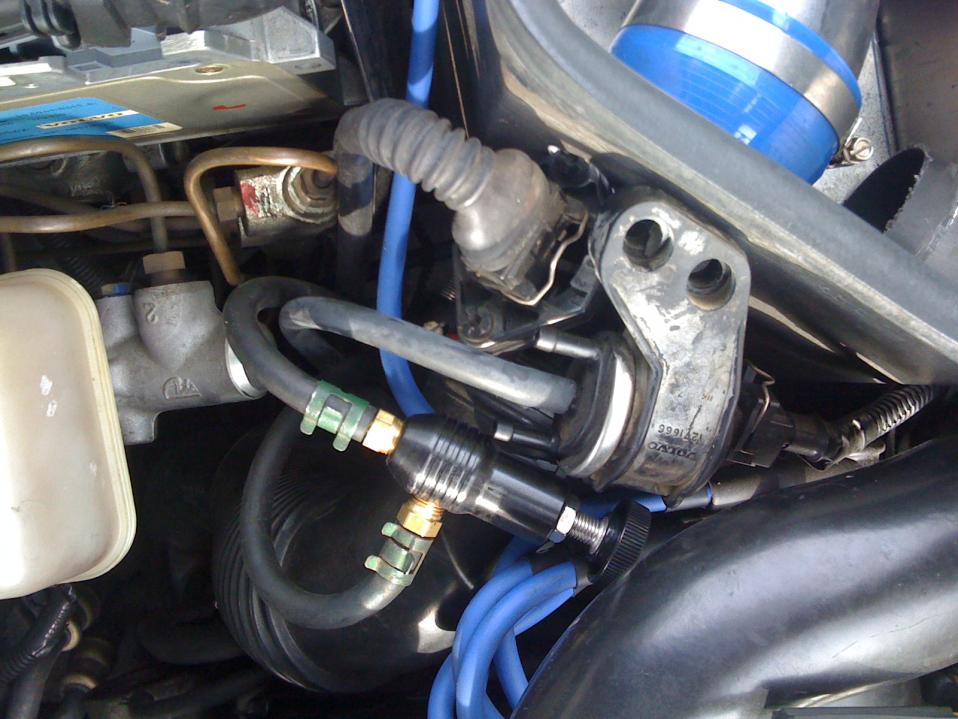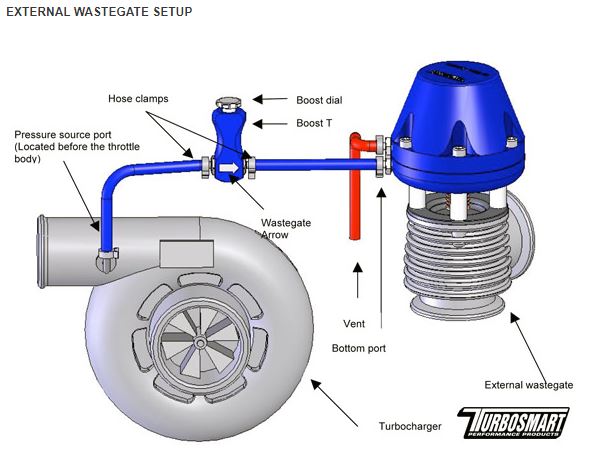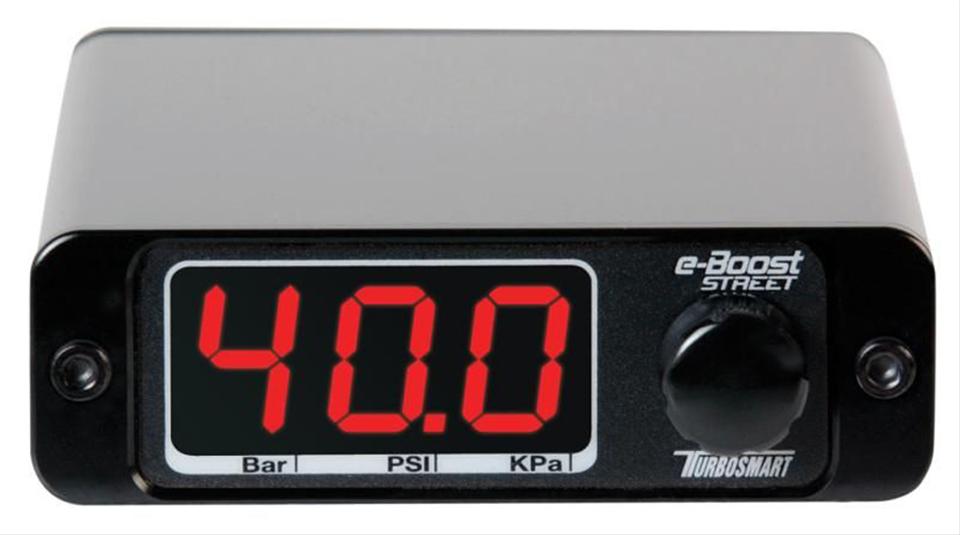
Here’s a manual boost controller, adjustable via knob on the controller’s housing. (Image/VolvoForums.com)
Turbochargers are becoming a go-to power adder, and not just for imports. Chevy and Ford currently have turbocharged engines in their lineup, and even the new Jeep Wrangler is expected to get a turbo’d four-cylinder.
Want to know how a turbocharger works? Here’s a good 101.
Since turbochargers are becoming more common, upgrading turbo systems for improved performance is as well.
One of the key upgrades to a turbo system is an adjustable boost controller, so we looked to the turbo brainiacs at Turbosmart to learn more about them.
What’s a Boost Controller?
“Boost” is turbo slang for how pressurized the intake air becomes. The more air a turbo forces into the engine, the higher the pressure inside the intake manifold becomes, which results in a higher boost level. A boost controller simply regulates the amount of boost the engine is fed. Excess pressure (boost) is sent to the wastegate where it is bled out of the system.
In North America, boost is typically measured in PSI, though it can also be quantified in kilopascals or bars, or in vacuum (in. Hg).
As with Twinkies and 80s Hair Metal, it’s possible to have too much of a good thing however. Excessive boost pushes more air than fuel into the engine. This negatively affects the engine’s air/fuel mixture and causes it to run “lean.” Why is running a lean fuel mixture bad? Read this.
A boost controller’s first job is to prevent too much boost from damaging the engine. But, in more performance-oriented applications, a boost controller can be adjusted to varying parameters and ensure the optimal boost level.
It’s not just for turbocharged applications either. If you’re running a supercharger, you can benefit from a boost controller too.
Mechanical (Manual) Boost Controllers
A mechanical boost controller (also known as a manual boost controller) is a set-and-forget type of setup. You dial-in the exact amount of boost you want via manual knob, close the hood, and the controller will maintain that level regardless of throttle position, engine speed, or atmospheric conditions.
It’s a simple and effective solution for regulating boost, and is perfect for daily drivers and many performance cars.
We got this installation diagram from Turbosmart, it shows you a typical turbo system with a manual boost controller and an external wastegate.

The manual boost controller installs between the turbo and wastegate, and can be adjusted via knurled knob on the controller housing. (Image/Turbosmart)
Electronic Boost Controllers
Electronic boost controllers give you the ability to make adjustments to the boost level based on engine RPM, or certain other parameters. Many electronic boost controllers have an in-cabin interface to allow you to modify settings like max. boost pressure and turbo spool-up speed.
Installing an electronic boost controller is a more complex process, given the additional wiring and setup required.

An electronic boost controller, like this one from Turbosmart, adds more adjustability to your turbo system. (Image/Summit Racing)
Which Boost Controller Should You Use?
That all depends on the application, and there are pros/cons to each. A manual controller is easy to install, yet an electronic boost controller has more versatility.
Are you upgrading your stock turbo performance, retrofitting a turbo system to a non-stock application, or adding a larger turbocharger? Each one of those scenarios may require different boost controller functionality.
If all-out performance is your number one goal, then an electronic boost controller is probably the way to go. For budget-minded daily-driver applications, a mechanical (manual) boost controller may be the more prudent choice.
Want More Info on Forced Induction? Read These.
Ask Away! with Jeff Smith: Here’s Why More Engine Boost Doesn’t Always Mean More Power
Turbo Install: We Add 200+ HP to a 5th-Gen. Camaro SS with a Turbonetics Turbo
Turbo Talk: Basic Guide to Choosing a Turbo for Your Diesel
Intercooler Guide: Air-to-Air vs. Liquid-to-Air Intercoolers–and Which is Right for You

[…] Download Image More @ http://www.onallcylinders.com […]
[…] difference in boost pressure supplied with each system, we elected to run a TC-1 electronic boost controller. Unlike a simple bleed valve (manual controller), the TC-1 not only controlled maximum boost, it […]